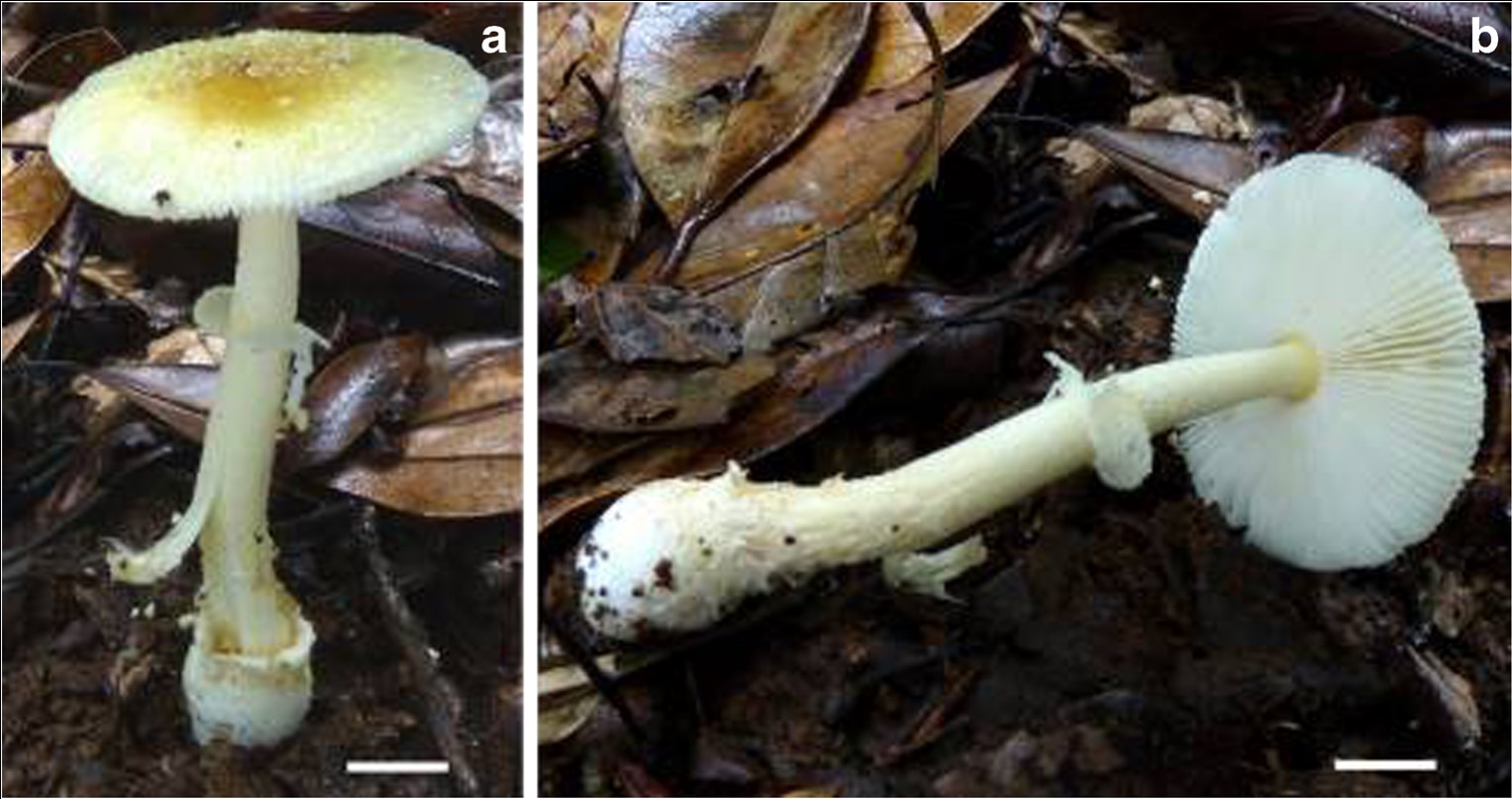 183
183
Amanita melleialba Zhu L. Yang, Qing Cai & Yang Y. Cui, sp. nov. 2020
Index Fungorum number: IF551331; Facesoffungi number: FoF00898
Holotype: CHINA, Hunan Province, Changsha City, Yuelu Mountain, Fagaceae (altitude ca. 260 m), 18 July 2014, S.C. Li 1 (HKAS 83216). Yunnan Province, Puer City, Caiyanghe Nature Reserve, Fagaceae (altitude 1300 m), 11 July 2014, G. Wu 1339 (HKAS
83446, holotype!); the same location, Fagaceae (altitude 1326 m), 11 July 2014, Xiao B. Liu 439 (HKAS 87085).
Morphological description
Basidiomata small. Pileus 2.8–5 cm in diam., planoconvex to plane, center often slightly depressed, honeycoloured, yellowish (4A3–4) to yellow (3B5–6), becoming yellowish to whitish (3A2) toward margin, viscid when moist; margin tuberculate-striate (0.4–0.6R), non-appendiculate; volval remnants as subconical to granular, small warts up to 2 mm high, dirty white (5B2), cream-coloured to yellowish (4A2–3), randomly arranged, or densely placed at center; trama white (1A1), unchanging. Lamellae free, white (1A1), crowded; lamellar edges finely fimbriate, white (1A1), dirty white (5B2, 4B1–2) to cream-coloured (4A2–3); lamellulae truncate, plentiful, evenly distributed. Stipe 4–8×0.4–0.8 cm, subcylindric or slightly tapering upward, with apex slightly expanded, white (1A1) to cream-coloured (1A2), covered with white (1A1) floccose squamules above annulus, with white (1A1) floccose squamules to granules under annulus; context white, loosely stuffed to hollow in center; basal bulb subglobose to napiform, 0.8–1.2 cm in diam., white (1A1); volval remnants as white to cream-coloured (1A1) floccose squamules to granules, or forming a short limb. Annulus present, pendant from attachment 1.5–3 cm below apex of stipe, white (1A1) to cream-coloured (1A2), with a yellow floccose edge. Odor indistinct.
Habitat: in subtropical forests dominated by Fagaceae
Distribution: southwestern and central China.
GenBank Accession:
Notes: Amanita melleialba is characterized by its small basidiomata, ellipsoid basidiospores (7.5–9.5×6– 7 μm), volval remnants on the pileus dominantly composed of abundant inflated cells in chains of 2–4, and occurrence in subtropical forests dominated by plants of Fagaceae.
Reference: Hiran A. Ariyawansa1,3 & Kevin D. Hyde1,2,3,15 & Subashini C. Jayasiri1,3 et al.
Basidiomata of Amanita melleialba (holotype). Scale bars: a–b=1 cm

